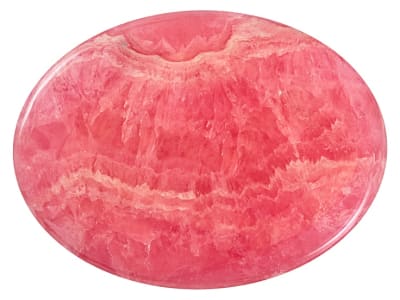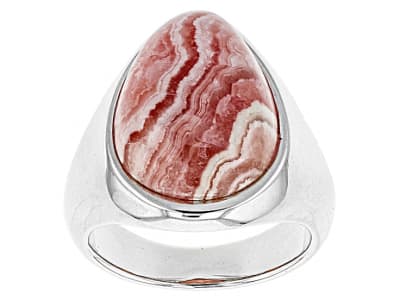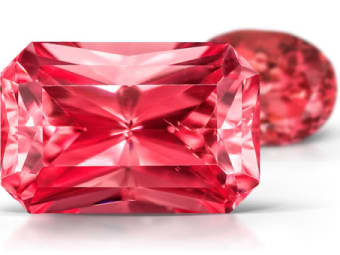Rhodochrosite gets its name from the Greek words rhodon, meaning rose and chros, meaning color. It comes in pink to red, orangy red, yellowish orange, and light to medium brown. Most people are familiar with the banded variety of Rhodochrosite that is used for decorative objects and is fashioned into cabochons for jewelry. This variety is known for its bacon-like appearance. Single crystal rhodochrosite is lesser known and highly sought after by collectors. This material is transparent to translucent and usually rhombohedral or rarely scalenohedral in form. The best-known locations for top quality specimens are the N’Chwaning Mines in South Africa and the Sweet Home Mine, near Alma, Colorado.
General Information
LWUV: Inert to moderate red
Rhodochrosite Colors
-
 Multi-color
Multi-color -
 Orange
Orange -
 Pink
Pink -
 Red
Red
Rhodochrosite Spectra
We acknowledge the significant scientific contributions of John S Harris, FGA to the study of gemstone spectra and with deep appreciation to him, acknowledges the use of his images and related notes about gemstones and their spectra in the educational materials on this website.
Alternate Names
Rosinca, Inca Rose
Countries of Origin
Tanzania, United Republic Of; Russian Federation; Czechia; United States of America; Kazakhstan; Thailand; United Kingdom of Great Britain and Northern Ireland; Portugal; Greece; Gabon; Austria; Sweden; Pakistan; Unknown; China; Ireland; Brazil; Slovakia; Bulgaria; Chile; France; Ecuador; Argentina; Romania; Hungary; Republic of Kosovo; Japan; Philippines; Ukraine; Bolivia (Plurinational State of); India; Spain; Canada; Belgium; Norway; Namibia; Italy; Mexico; South Africa; Australia; Peru; Germany
Care
Rhodochrosite is very soft, so be mindful of scratching or chipping. Soluble in hydrochloric acid. Requires gentle handling.
Species/Variety
Rhodochrosite (single crystal)
Clean, transparent, facetable material and mineral specimens are extremely rare and highly sought after by gem collectors. Faceting such crystals presents a challenge to cutters due to the gem's perfect cleavage in three directions. Two of the best know sources of translucent material come from N’Chwaning, South Africa and the Sweet Home Mine in Alma, Colorado, but it can also be found several African country’s Germany, southern Mexico, Peru, and Romania.



